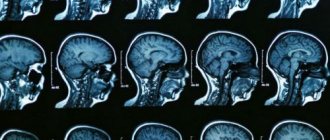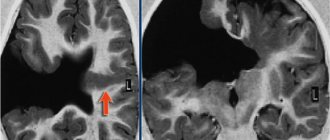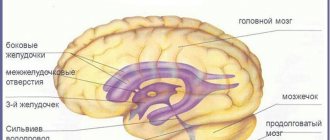Women live longer than men - statistics say so. Why? After all, it would seem that a man is physically stronger and more resilient, and a woman is a more fragile creature, moreover, subject to constant anxiety and stress. An American study called Why Men Quit First explains why men have shorter life expectancies and what needs to be done to reverse this trend.
Osteomyelitis - what is it?
Inflammation affects all components of the bone - hard parts and bone marrow, which, as the pathology develops, increases in volume and swells. As a result, the bone marrow is compressed by hard tissue, which results in compression of the blood vessels and cessation of blood flow in the pathological focus. Often the disease spreads to the surrounding soft tissue - the pathogen infects the cells, causing suppuration.
The pathology is often diagnosed in children and is more common in boys. It is characterized by a rapid transition to a systemic purulent infection (sepsis), which in 36% of cases ends in death. When developing in an adult, the disease is complicated by pathological fractures, the formation of false joints, and impaired limb function.
How many people live with HIV without treatment?
Sometimes a person does not want to be treated because he refuses to accept the fact that he is infected, or is afraid of publicity in society (despite the non-disclosure law). At the same time, the patient wants to know how many people live with HIV without treatment and clings to any straw to believe in a miracle.
But, unfortunately, miracles do not happen. Living with HIV without treatment leads to the most adverse consequences, including death. Approximately 1-2 years after infection, the cells of the immune system begin to attack, which are inevitably destroyed. A common cold or cut can lead to the death of the patient, since the work of immune cells is zero.
Thus, taking into account the stages of HIV, we can say that life expectancy without therapy is on average 3-4 years. In some cases, this period reaches 5-7 years, but this is rather an exception.
Causes of the disease
The onset of inflammation in the bone marrow is provoked by the penetration of an infectious agent into it. Microbes infect the bone through blood vessels, surrounding tissue, or through deep injuries. Causes:
- infectious lesions of the soft tissues surrounding the bone - phlegmon with clear localization, encapsulated cysts after rupture, bacterial inflammation of the muscles;
- complications after operations - joint replacement and osteosynthesis;
- hematogenous route: the infection penetrates the bone marrow through the bloodstream - the cause of osteomyelitis can be any infectious focus (for example, chronic inflammation of the kidneys, tonsillitis, furunculosis);
- bone damage - gunshot and cut wounds, fractures with rupture of soft tissues, etc.
The presence of a clear cause does not necessarily mean the development of osteomyelitis, since provoking factors must “work.”
- Untreated or chronic infection. If the therapy is improper, microbes develop resistance to drugs, then treatment of osteomyelitis with antibiotics will be ineffective.
- Weakened immunity. Any disease, psycho-emotional breakdown, or a common cold can lead to this. Problems also arise against the background of long-term use of glucocorticosteroids, diabetes, systemic connective tissue diseases, and oncology.
- Young patients – children under 5 years of age.
Who lives longer, thin or fat?
Strange as it may seem, the opinions of experts from different countries on this matter come down to one conclusion. Overweight people live longer. Conducting a series of studies, scientists noticed that those who were too thin died 8 years earlier than those who were overweight. Although obesity is inferior in life expectancy to normal weight. People in normal shape live 5 years longer than obese people.
People who are underweight are more susceptible to various diseases. They often die from cancer and heart attacks, become depressed and develop nervous disorders.
Fullness, of course, is also not attractive. Fat people suffer from diabetes, have cardiovascular ailments, and musculoskeletal disorders.
It is best not to have extra pounds or excessive thinness. Normal weight is the key to longevity.
Classification of pathology, photo
Depending on the cause of development, types of osteomyelitis are distinguished:
- hematogenous - the infectious agent penetrates the bone marrow through the bloodstream without open bone injuries;
- post-traumatic – occurs due to incomplete antibacterial treatment of fractures;
- gunshot – develops with corresponding wounds;
- postoperative – may be a postoperative complication – fixation of the bone with screws, plates and other structures.
Depending on the speed of development and duration of symptoms, osteomyelitis is distinguished:
- acute – develops within 2 weeks, more often in children;
- subacute – lasts for a month;
- chronic - the clinical picture remains unchanged for more than 30 days, only one bone is affected, there is a high probability of the appearance of a fistula;
- chronic multifocal – symptoms persist for more than a month, multiple foci of inflammation are diagnosed.
Until the etiology is clarified, unspecified osteomyelitis is diagnosed. When the diagnosis is confirmed by instrumental examination, a chronic form is revealed.
What foods shorten life?
Experts in the field of proper nutrition have agreed on certain foods that shorten life.
These include:
- absolutely alcohol - it is better to use small quantities on holidays;
- carbonated sweet drinks due to their significant sugar content and chemical additives;
- green tea if brewed incorrectly and consumed excessively;
- chips, french fries, instant noodles - all this is pure chemicals;
- fatty meat, sausages, frankfurters;
- Oddly enough, garlic - a harmless amount of consumption per day - 1 head;
- salt, sugar;
- mayonnaise, ketchup, sauces;
- chocolate bars, cakes, pastries;
- prunes - poorly washed;
- ice cream and yoghurts have a long shelf life - due to the high content of vegetable fats and chemical additives.
Of course, you shouldn’t completely give up your usual, many-loved products. It is important to process them correctly, prepare them and use them sparingly.
Symptoms of different types of osteomyelitis
The clinical picture varies depending on the form of the disease.
Acute hematogenous
It is characterized by a severe course and a rapid increase in symptoms. The hematogenous form of the disease comes in 3 types.
Toxic (adynamic)
The clinical picture corresponds to endotoxic shock, is aggressive and life-threatening. Symptoms:
- a sharp decrease in blood pressure;
- loss of consciousness, coma;
- critical hyperthermia – temperature increase to 40-41 °C;
- shortness of breath, lack of air;
- convulsions common in children.
The condition leads to heart failure and death. Often timely and competent resuscitation measures do not help. Sometimes doctors detect acute hematogenous toxic osteomyelitis based on the patient’s complaints - swelling at the site of the affected bone, hyperemia and increased skin temperature.
Septic-pyemic
The clinical picture develops immediately after the infection enters the blood:
- heat;
- Strong headache;
- hypotension;
- weakness.
Signs are combined with intense pain at the site of inflammation, severe swelling and redness of the tissues. With proper and timely assistance, the survival rate of patients upon diagnosis is 40-50%; in the absence of treatment, death occurs in 70% of patients.
Local
The mild course of the disease leads to a favorable prognosis. Local hematogenous osteomyelitis is characterized by moderate general symptoms:
- fever;
- increased sweating;
- severe weakness;
- lack of appetite;
- mild headache.
Non-steroidal anti-inflammatory drugs, painkillers and antipyretics do not help. When examining the patient, swelling and redness of the skin at the site of inflammation are noted.
Subacute osteomyelitis
Subacute osteomyelitis is a transition period, after which the chronic stage of the disease begins. Manifested by symptoms:
- persistent subfebrile body temperature;
- slight weakness;
- weak dull pain in the pathological focus;
- limited mobility of the joint located next to the affected bone.
Chronic osteomyelitis
The patient's condition is within normal limits, sometimes there is discomfort at the site of bone damage, low-grade fever, and slight swelling. Consequences of the pathology:
- purulent fistula - the beginning of a canal in the infected bone, exit on the skin;
- shortening of the affected limb.
For chronic osteomyelitis, radiological signs are applicable that do not in any way affect the general well-being of the patient - for example, periodically there is a separation of parts of the diseased bone that have undergone structural destruction - sequestra.
Osteomyelitis after tooth extraction
Maxillofacial pathology, symptoms depend on the severity of the disease. In addition to the classic signs, the following are observed:
- inability to open your mouth wide;
- severe pain when chewing and swallowing;
- pronounced swelling of the face.
Spinal osteomyelitis
Severe back pain is the main symptom. It cannot be relieved by medications, exercise, physiotherapy, massage or heating. Localized pain appears in the first hours after a specific bone is affected. As the disease progresses, the following appear:
- increased sensitivity of the skin, it is impossible to touch the spine - even light touches cause an acute attack of pain;
- increased heart rate;
- a sharp drop in pressure;
- unmotivated weight loss.
What foods extend life?
Doctors have identified products whose consumption will help prolong life.
Among them:
- tomatoes - as antioxidants and protectors against cancer;
- bananas are protectors of the cardiovascular system;
- citrus fruits, pomegranate, kiwi are sources of vitamin C;
- raspberry – has a beneficial effect on cell division;
- blueberries – strengthens memory and vision;
- black chocolate;
- red onions, cucumbers, cabbage;
- bran bread and various types of cereals.
The aging process is also slowed down by living enzymes contained in sauerkraut, legumes, soybeans, draft beer, sprouted seeds and kvass.
And of course, ordinary pure water, up to two liters per day, is an important source of longevity.
Methods for diagnosing osteomyelitis
To confirm the diagnosis, the patient undergoes examination:
- laboratory tests of blood and urine will indicate an increase in the level of leukocytes and the development of acute inflammation;
- infrared scanning (thermal imager) is used to identify areas of acute pathology;
- bone puncture can be a diagnostic or therapeutic procedure; for diagnosis, purulent contents are taken from the affected bone;
- X-ray – pictures are taken in two projections, they allow you to determine the location of the inflammatory focus, the diagnosis can be made 3-5 days from the lesion.
Computed tomography is more informative than other diagnostic methods. The study helps determine the localization of the pathology and reveal the extent of the process. CT scan is performed to differentiate osteomyelitis from other bone pathologies.
Life expectancy with a pacemaker
So, from a medical point of view, life expectancy with a pacemaker is determined primarily by the general health of the patient and does not depend on the presence of IVR.
Only in the first time after the operation, the patient is advised to limit his activity: he should not lift heavy objects, work in an inclined position, etc. If you subtract these two or three months after the operation to install (implant) the device, then the pacemaker and the duration of active life also do not depend much on each other.
Recommendations for increasing life expectancy with a pacemaker are general:
- worrying less, resting more and being calmer about everything is, of course, difficult to implement, but this will help maintain the heart rhythm in a normal state;
- drink less alcoholic beverages, and definitely don’t get drunk - alcohol, again, disrupts the heart rhythm, which can lead to the development of tachycardia (the stimulator will skip beats when an impulse is needed, and send an impulse to the heart when it is already beating normally) ;
- lead a moderately active lifestyle, i.e. It’s no longer possible to lift “iron” (including because the electrical impulse sent to the contracting pectoral muscle can interfere with the work of the pacemaker), but walking and running, swimming is fine.
In general, the life expectancy of people with a pacemaker has no correlation with the very fact of having a pacemaker installed, subject to restrictions. It is necessary to remember the prohibitions, undergo timely examinations, not violate contraindications, avoid heavy physical work (including monotonous work - in order to avoid the electrode coming off) - and you can lead a full life!
Does a pacemaker have a greater effect on life expectancy? How much does a pacemaker prolong life and does it prolong it at all? No doctor can predict how much ECS can extend life expectancy. The task of IVR is to prevent death in the event of an attack of arrhythmia or blockade.
More discussion:
What is the life expectancy after pacemaker installation?
Throughout life, a medical history is maintained with the pacemaker. The medical history of a pacemaker begins with an anemnesis (a record of information about the patient's condition obtained from the patient himself or his relatives).
How and with what to treat different types of osteomyelitis
Treatment of the early stage of acute osteomyelitis is carried out using a therapeutic method.
Treatment of osteomyelitis with medication
The goal of therapy is to destroy the infectious agent.
- Antibiotics - Cefazolin, Co-trimoxazole, Linezolid and others. Drugs are prescribed individually, based on the results of bacteriological cultures. When treating the hematogenous form of the disease, several drugs are often combined. The duration of antibacterial therapy is from 20-30 days, with the hematogenous form - 1.5 months or more.
- Immunomodulators - Amiksin, Timalin and others. The course of treatment is determined individually, the duration of therapy is from 10 days to several months. Immunomodulators are necessary to support and strengthen the immune system and increase the body's resistance to infection.
- Diuretics – Lasix or Furosemide. Swelling is quickly eliminated. Often prescribed for the treatment of osteomyelitis after tooth extraction. The treatment regimen is determined by the doctor, taking into account the patient’s condition.
- Crystalloids - Trisol, saline solution, Normosol and others. Administered intravenously for 5 days to eliminate symptoms and normalize the condition.
Treatment of chronic osteomyelitis
Therapy for chronic osteomyelitis is carried out during periods of exacerbation. The treatment regimen does not differ from that used for the acute form of the disease. During periods of remission, they undergo maintenance therapy with immunomodulators.
In the absence of pronounced symptoms, ointments with an antibacterial and decongestant effect are prescribed. Warming procedures are excluded.
Chronic osteomyelitis can also be treated at home, but with the permission of a specialist. A slight deterioration in condition is a reason for hospitalization. Often, during the disease, the bone is deformed, the affected leg shortens, fistulas appear that do not heal for a long time and periodically fill with purulent exudate. In such cases, the question of performing an operation is raised.
Surgical treatment of osteomyelitis
Surgical intervention is prescribed for:
- intermuscular and periosteal phlegmon;
- purulent arthritis;
- atypical form of pathology;
- extensive fistulas that are not amenable to therapeutic treatment;
- frequent and severe relapses.
Operations to remove a purulent focus are almost always performed in dentistry. The procedure is performed under local anesthesia. The doctor makes an incision in the gum and underlying tissues and cleans the affected area of bone. Osteomyelitis after tooth extraction is treated by a maxillofacial surgeon, and if necessary, a plastic surgeon is involved.
Operations are carried out using two methods.
- A tissue incision at the site of the outbreak to remove pus from muscle fibers, periosteum, and tendons. The doctor cuts the soft tissue without opening the bone.
- Osteoperforation. A hole is made in the bone through which the cavity is sanitized. At the end, a drainage device is secured to ensure the outflow of exudate from the lesion. The operation is more often used for acute osteomyelitis, when it is necessary to urgently remove the lesion.
To treat chronic osteomyelitis, compression-distraction osteosynthesis is performed according to Ilizarov: the affected area of the bone is removed, its ends are connected, the axis of the limb is fixed with rings and knitting needles. When the bone begins to heal, the rings are gradually moved apart using vertical rods, stretching the limb.
Features of treatment of osteomyelitis in children
Surgeons prefer to perform gentle operations that preserve the functionality of the bone apparatus. Specialists choose a puncture method suitable for treating children under 6 years of age.
The operation in children involves “piercing” the bone with a special needle, suctioning out the pus and rinsing the lesion with antibacterial drugs.
During the therapeutic treatment of osteomyelitis, a fixing plaster is applied to the limbs and the load is removed. This prevents the spread of infection and its penetration into soft tissues.
Why do they say that smart people live long?
English researchers claim that the prudent live longer than the stupid and uneducated. This statement is explained by the former’s ability to restrain themselves in stressful situations, to keep their emotions under control, and to respond adequately to any negative situations. Poorly educated people lack self-control, get irritated over trifles, worry and are nervous. As a result, all this negatively affects the psycho-emotional state and general well-being.
In addition, according to genetic scientists, high intelligence is directly related to a genetic predisposition to longevity. In other words, the duration of life's journey is laid down in the womb. And the higher the mental abilities, the longer the life cycle.
Frequently asked questions from patients
Osteomyelitis is a dangerous disease that can lead to disability or death. It is important to diagnose the disease in a timely manner, carry out proper treatment and undergo rehabilitation.
Which doctor treats you?
If there are signs of osteomyelitis, you should seek help from an orthopedist. In public medical institutions, you must first visit a surgeon, who will give a referral to a specialist.
Can it be cured completely?
Cases of complete recovery of patients with osteomyelitis are not an exception, but a fairly common occurrence. This is possible with timely diagnosis and proper treatment. Even when the disease develops in newborns, doctors give favorable prognoses.
Live long test
The journey of life consists of different moments. It is studied by scientists, geneticists, demographers, and nutritionists. Many studies provide striking results and conclusions. However, not everyone agrees with one or another of the experts’ arguments.
In addition to scientific knowledge in the field of longevity, there are a lot of tests, sometimes even comic, that allow you to establish the biological age period and date of death.
So, for example, you can find out the date of death here: https://4tololo.ru/content/13154
Whether you will live long or not - find out here: https://shkolazhizni.ru/test/34/
You can find out the approximate lifespan of your life, the reasons for the reduction, and fix something right now here: https://signorina.ru/2977-test-skolko-let-vy-eshhyo-prozhivyote.html
As you can see, there are a lot of online tests for life expectancy. But whether to believe them or not is a prosaic matter. Although some conclusions can be drawn about the way of one’s existence.
Causes and risk groups
The exact causes leading to the occurrence of this disease have not been identified. Presumable etiological factors are:
- Ionizing radiation.
- Prolonged contact with toxic substances.
- Long-term antigenic stimulation.
- Infection with herpes virus type 8.
The effect of a hereditary factor for myeloma is doubtful, but sometimes it occurs in members of the same family.
Risk factors for multiple myeloma include:
- Age over 40 years (average age of patients is 65 years).
- Male gender.
What kind of people live long?
The secret formula for longevity has interested scientists since the 19th century.
They conducted studies grouping people into different categories:
- on interethnic grounds;
- by properties and character traits;
- by occupation;
- by gender;
- by involvement in marriage;
- by area of residence;
- by physique and height.
Thus, the longest living population is Monaco, East Asian Macau and Japan. The average ages in these countries are 89, 84 and 83 years.
According to English gerontologists, people with a high IQ are less likely to die than those with little education.
An irrefutable statement is that women live longer than men. Single men outlive divorced men, but not married men. Marital ties do not affect a woman's life expectancy.
Researchers at the University of Hawaii have discovered an interesting detail about longevity. According to them, tall people live shorter lives than short people. This nuance is primarily associated with the presence of a certain life expectancy gene.
Symptoms
The clinical picture of myeloma is associated with plasma cell infiltration of the bone marrow and bones themselves, tumor penetration beyond the bone tissue, as well as the formation and release of monoclonal immunoglobulins.
The main symptoms of the disease are caused by bone damage. Foci of osteodestruction are observed in the flat bones of the pelvis, skull, sternum, spine, and the proximal parts of the tubular bones are also affected. The process of osteodestruction is manifested by pain in the bones and can lead to deformities. The classic symptom of myeloma is spontaneous fractures. With the active form of the disease and in the terminal stage, tumors spread into the soft tissues.
Radiologically, multiple myeloma manifests itself as generalized osteoporosis, osteolytic lesions, and pathological fractures. When conducting a survey X-ray, multiple “stamped” lytic foci are revealed in the bones.
As a result of osteodestruction and high bone resorption, patients exhibit an increase in serum calcium levels. Hypercalcemia is manifested by dyspeptic disorders, muscle weakness, and polyuria. The most severe manifestation of hypercalcemia is renal failure, the occurrence of which has an extremely negative impact on the prognosis and life expectancy of the patient.
Another common (observed in more than half of patients) symptom of myeloma is normochromic anemia. The appearance of anemia is caused by myelosuppression, which occurs when tumor cells infiltrate the bone marrow.
In 20% of patients with myeloma, nephropathy is observed, and in another 20% of patients, kidney damage occurs during treatment. Myeloma nephropathy is manifested by an increase in protein levels in the urine, a decrease in urine concentration, and manifestations of renal failure.
In 10 cases out of 100, with myeloma, the development of amyloidosis is observed - deposits in the tissues of fibrils, including light chains of immunoglobulin. The symptoms of amyloidosis will depend on which organ is affected. Frequent targets are the heart, kidneys, and intestines.
Peripheral polyneuropathy in myeloma is usually symmetrical and manifests itself as motor and sensory disturbances. Occurs in 5–10% of patients.
Due to disruption of the normal production of immunoglobulins, their concentration in the blood serum decreases, and immunodeficiency develops. Patients become predisposed to developing severe, recurrent infections, and life-threatening septic complications are common. Infectious complications are the most common cause of death in myeloma patients. Thus, the immunodeficiency characteristic of this disease can significantly reduce the life expectancy of patients due to the high risk of developing severe complications.
How long do people live with HIV infection?
There can be no clear answer to the question of how long diagnosed people live with HIV infection, if only because many factors play a role here, including timely correct diagnosis and appropriate treatment. In order to more clearly understand how long you can live with HIV infection, you need to have a good understanding of what kind of virus it is and how it can affect the body.
The abbreviation HIV stands for “human immunodeficiency virus.” It is acquired mainly through sexual contact; a third are infected through a contaminated syringe when injecting drugs. There are also the most dangerous procedures, including:
- taking blood tests at donor points;
- infusion of donor blood;
- dental treatment;
- eyebrow correction and haircut;
- tattoo, permanent makeup.
The risk of HIV transmission through everyday contact is minimized. It is possible if both a healthy and a sick person have bloody abrasions, and they come into close contact through the same objects. You can also become infected through a kiss if there are ulcers on the mucous membranes.
After the HIV virus enters the body, it begins to infect T-leukocytes, the main component of the immune system. The incubation period before reproduction is about two weeks. After this, there is still a year before the active production of antibodies, and in people with chronic diseases this stage is reduced to six months. After this period, the first symptoms begin to appear, including:
- periodic surges of elevated temperature within 37.0 – 37.5 degrees;
- formation of ulcers on the mucous membranes of the mouth;
- swelling and tenderness of the lymph nodes.
At this point, HIV tests will help determine infection with a 100% probability, and therefore prescribe appropriate treatment.
The disease then goes through several stages.
| Stage | Duration | How it manifests itself |
| Hidden (latent) | 5-10 years | Increased size of lymph nodes, relative painlessness and density |
| Transitional (pre-AIDS) | 1-2 years | The beginning of active damage to immune cells: the body weakens, frequent colds and acute respiratory infections appear. Ulcers and wounds do not heal for a long time, chronic candidiasis and herpes occur |
| AIDS (terminal) | Maximum duration unknown | The immune system is completely destroyed: tumors and infectious processes occur |
Today, the question of how many years people live with HIV infection cannot be answered with certainty, since the subsequent life of an infected person depends on a number of factors, among which must be taken into account:
- Age of the sick person. A young body tolerates diseases more easily, restoration and regenerative processes occur faster in it;
- Lifestyle. This means good nutrition, physical activity, and the absence of bad habits;
- Stable psyche. Exposure to stress and depression undermines health and weakens the immune system;
- Favorable environmental conditions. The absence of nearby hazardous industries, a sufficient amount of sunlight, the availability of clean drinking water, and a mild climate can add several years and alleviate the suffering of the patient;
- Chronic diseases in the past.
It has also been noted that people living close to the sea live longer than those who live in areas with a harsh climate (for example, the Far North and similar areas). The rural environment is also in many ways more favorable, since the air and water there are cleaner than in large industrial cities. Also, the consumption of natural products plays a significant role here, while in cities the quality of food is much lower.
The average life expectancy with HIV infection ranges from 5 to 10 years from the moment of infection, taking into account the listed factors. There are documented cases in medicine where patients with this diagnosis lived to old age. Therefore, it is unlikely that it will be possible to answer the question of how long people live with HIV infection.
Classification
There are a number of immunochemical variants of multiple myeloma based on the predominant type of serum and/or urinary paraproteins.
Immunochemical classification of multiple myeloma:
- G – variant of myeloma.
- A – variant of myeloma.
- D – variant of myeloma.
- E – variant of myeloma.
- Bence Jones myeloma.
- Nonsecreting myeloma.
- Diclonal myelomas.
- M – variant of myeloma.
G - myeloma is the most common. The predominance of Ig G paraproteins in serum occurs in more than 50% of cases.
Scales
Libras are not the longest living representatives of the zodiac circle (women up to 77 years old, men up to 73 years old). However, they have the opportunity to challenge stubborn astronomical statistics and win a few extra years of life if they take care of their weak immunity. The body's high protective properties will help Libra avoid other potential risks - skin, lower back and kidney diseases.
Advice: Keep your health in a dry and warm place, as the stars advise you to avoid cold weather and high humidity.
Forms
Based on the clinical and anatomical classification, several forms of multiple myeloma are distinguished:
- Diffuse.
- Diffuse-focal.
- Multifocal.
- Sclerosing.
- Mainly visceral.
The basis for this classification is the results of an X-ray examination of the skeleton, as well as analysis of punctures and biopsies of the patient’s bone tissue.
Depending on the activity of the disease, there are 2 forms of multiple myeloma:
- “Smoldering” (asymptomatic) – does not manifest itself with typical symptoms, there are no osteolytic foci and disturbances in the functioning of internal organs. Serum M gradient greater than 30 g/L and/or bone marrow level of clonal plasma cells ≥10%.
- Active – there is a process of osteodestruction, an increase in the mass of tumor cells, the development of infectious complications, increased blood viscosity syndrome and other signs of disease activity.
The effect of alcohol on the body
Alcohol has a very strong destructive effect on the body, and the strength of the drinks is not of fundamental importance.
Ethanol is a substance that accumulates in the liver and brain and has the most detrimental effect on their cells. But the most dangerous thing is not even this: ethanol in the human body is the strongest mutagenic substance.
Therefore, as long as the effect of ethanol is neutralized by the immune system, nothing unusual seems to happen. But this cannot continue for long, gradually the strength of the immune defense decreases, and then alcoholics develop cancer. The liver, esophagus or oral cavity are especially often affected. On average, alcoholics live 10 years less.
Alcoholism
In addition, there are a number of dangerous effects of alcohol on the human body:
- If a woman drank alcohol during pregnancy or abused it before conception, then the likelihood of harmful effects on the fetus is very high. The heart, brain of the unborn baby, as well as its limbs are especially susceptible to this.
- The excitability of cells in the body increases significantly. This occurs due to the activation of receptors for the amino acid GABA, which acts as the main inhibitory transmitter of the nervous system.
- Under the influence of alcohol, endorphins and dopamines are synthesized in large quantities and this causes the short-term onset of a state such as euphoria.
- A person’s pulse quickens, their heart functions abnormally, and they feel short of breath—this is how the toxic effects of alcohol manifest themselves.
- With systematic consumption of alcohol (especially strong alcohol), fatty degeneration develops, and there may be inflammatory processes in the liver. This is due to the fact that under the influence of alcohol, hepatocytes (liver cells) are destroyed, and cirrhosis develops.
- Long-term alcoholism causes alcoholic encephalopathy, in which the patient begins to suffer from hallucinations - visual or auditory. This indicates that mental disorders have begun. The brain cells that are responsible for intelligence simply die off. This is irreversible. It has been proven that just 100 g of alcohol can kill 10,000 neurons that are directly involved in thought processes. Thus the brain decreases in size.
- The kidneys are no less susceptible to the effects of alcohol. When this organ is poisoned by metabolic products, the death of the renal glomeruli occurs.
- The human reproductive system also suffers greatly. There may be not only a partial decrease in sexual function, but also complete impotence. Even if everything seems to be normal, testosterone synthesis and sperm production may decrease significantly. Women often experience early menopause (10-15 years earlier than normal), changes in appearance due to hormonal imbalances in the body. This entails the appearance of traits inherent in men.
- The vessels are the first to take the hit. This happens literally a couple of minutes after drinking alcohol: the vessels dilate, the blood flow increases, and as a result, there is a decrease in pressure and a lack of normal blood supply to the extremities. If the vessels remain in this state for a long time, the person receives a terrible shock reaction.
The effect of alcohol on the body
Despite the above problems, alcoholics sometimes live a long time, and those around them wonder why? In fact, it depends on the individual person’s body. If the body is strong, then a person can live even longer than non-drinking and light-drinking relatives and friends, but this is rather an exception to the rule.
Diagnostics
In order to make a diagnosis of multiple myeloma, determine the stage of the disease and its form, and also choose the right treatment tactics, it is necessary to conduct a comprehensive examination of the patient.
- Anamnesis.
- Inspection with palpation of accessible groups of lymph nodes.
- Assessment of the patient's condition according to the WHO ECOG scale.
- Detailed clinical and biochemical blood tests.
- General urine analysis.
- Calculation of glomerular filtration rate.
- Carrying out a coagulogram.
- Determination of serum β-2 microglobulin levels.
- Quantitative determination of the M-gradient level by electrophoresis and immunofixation.
- Determination of immunoglobulin content in serum.
- Study of the morphology of bone marrow aspirate or tumor biopsy.
- X-ray examination of the skeleton.
- If there is no pathology on the x-ray, a CT scan can be performed to clarify the diagnosis.
- MRI is prescribed if spinal compression is suspected in order to assess the size of the spreading lesion and its nature.
Virgo
For women, the stars measure their life path up to 81 years, for men - up to 77 years. Virgos are not deprived of health, although most of them have a vulnerable digestive system and suffer from disorders associated with its functioning. But even despite this, astrologers call Virgos the healthiest centenarians.
Advice: Give your stomach fasting days more often, eat only healthy foods and never overeat. In this situation, the stars are ready to give you a few more years of life.
Treatment
The patient's life expectancy largely depends on the correct diagnosis and choice of the right treatment methods. When determining treatment tactics for myeloma, one should take into account the patient’s age, stage and form of the disease, as well as the presence or absence of concomitant pathology. For patients under 65 years of age without serious somatic pathologies, high doses of chemotherapy and transplantation of their own stem cells are recommended. For patients over 65 years of age, as well as patients with concomitant pathologies, new drugs without high doses of chemotherapy are used, also in combination with stem cell transplantation.
What to do to live long?
Recently, the topic of longevity has become quite relevant. Well, how could it be otherwise? We are born, we live and we do not want to die early. How to extend your years?
And you need very little.
- Firstly, adhere to a healthy lifestyle and proper nutrition.
- Secondly, be happy, smile more often, learn to enjoy the little things.
- Thirdly, move more. It’s not for nothing that they say: “Movement is life.”
- The fourth rule calls for being prudent, being able to restrain emotions and think through your actions.
- And finally, start a family. It is in marriage that people live the best years of their lives.
Recovery process
Any of the treatment regimens involves the use of drugs with a large number of side effects. The body weakened by the disease also reacts in a certain way to autotransplantation: neutropenia or thrombocytopenia may be observed in the blood for a long time. In addition, several weeks after autotransplantation, the development of infectious complications and exacerbation of chronic diseases may occur. Manifestations of asthenic syndrome are observed.
Thus, the recovery process after treatment may take some time. The presence and severity of symptoms during recovery should be taken into account when choosing further therapy, as well as when deciding on repeat autotransplantation.
Basic principles of healthy eating
In addition to the basic five principles of healthy eating, there are also additional ones:
- To maintain good shape, you need to move as much as possible: walk, go to the pool, go to fitness.
- Visiting massage parlors will help the body better digest incoming substances.
- You need to eat food at the table, completely concentrating on lunch. Under no circumstances should you have lunch in front of the TV, at the computer or in front of the newspaper.
- Learn to replace high-calorie foods with low-calorie ones.
- Avoid alcohol or drink strictly on holidays.
- Go grocery shopping only on a full stomach.
- Remove large, bulky plates. Buy small ones. This will allow you to reduce portions, which is also important.
- Don't stress and don't overeat.
- Get into the habit of counting calories and writing down what you eat.
These simple principles will also help you avoid problems with excess weight and extend your life by a certain number of years.
Complications and relapses
Multiple myeloma is a disease that is quite difficult to treat. Even after a full course of treatment, myeloma can recur quite quickly.
Relapse criteria (one or more signs):
- Detection of indicators of the spread of the process and/or organ failure.
- The appearance of new foci (bone and plasmacytomas).
- Already existing lesions increase in size.
- Increased serum calcium levels.
- Decrease in hemoglobin by 20 g/l or more.
- The serum creatinine level is increased to 177 µmol/L or more.
Also, the course of this disease is often accompanied by various complications:
- The most common and dangerous group of complications are viral and bacterial infections, which can be extremely severe due to acquired immunodeficiency.
- Extensive tumor disintegration may occur.
- Increased blood viscosity syndrome provokes the appearance of thrombosis.
- Spontaneous bone fractures are also a fairly common complication.
- Kidney failure.
- In severe cases and in the terminal stage, multiple myeloma can be complicated by paraproteinemic coma.
The development of complications, especially serious infections, severe renal failure, and multiple thromboses significantly worsens the prognosis and can significantly reduce life expectancy in myeloma. However, if complications are identified in the early stages and the correct therapy is selected, the patient’s condition in most cases can be stabilized.
Eating less means living longer, is this true and why?
Nutritionists from the Netherlands clearly state that excessive food consumption shortens life expectancy. Conducting experiments on monkeys, rats, and fish, reducing the consumption of carbohydrates and proteins in their diet, they noticed a tendency to increase their lifespan.
According to the same scheme, nutritionists studied people. Those who consumed mainly fruits, low-fat foods, vitamins, and minerals felt much better than gluttons. Reducing the calorie content of food intake helps slow down the aging process.
Genetic nutritionists are confident that by reducing the number of calories and volume of food by 20%, you can increase life expectancy by the same 20%. This idea is based on research in the field of gerontology more than 60 years ago.
Thus, the expression “Eat less - live longer” is absolutely accurate. Nutrition should be moderate, balanced and low in calories.











